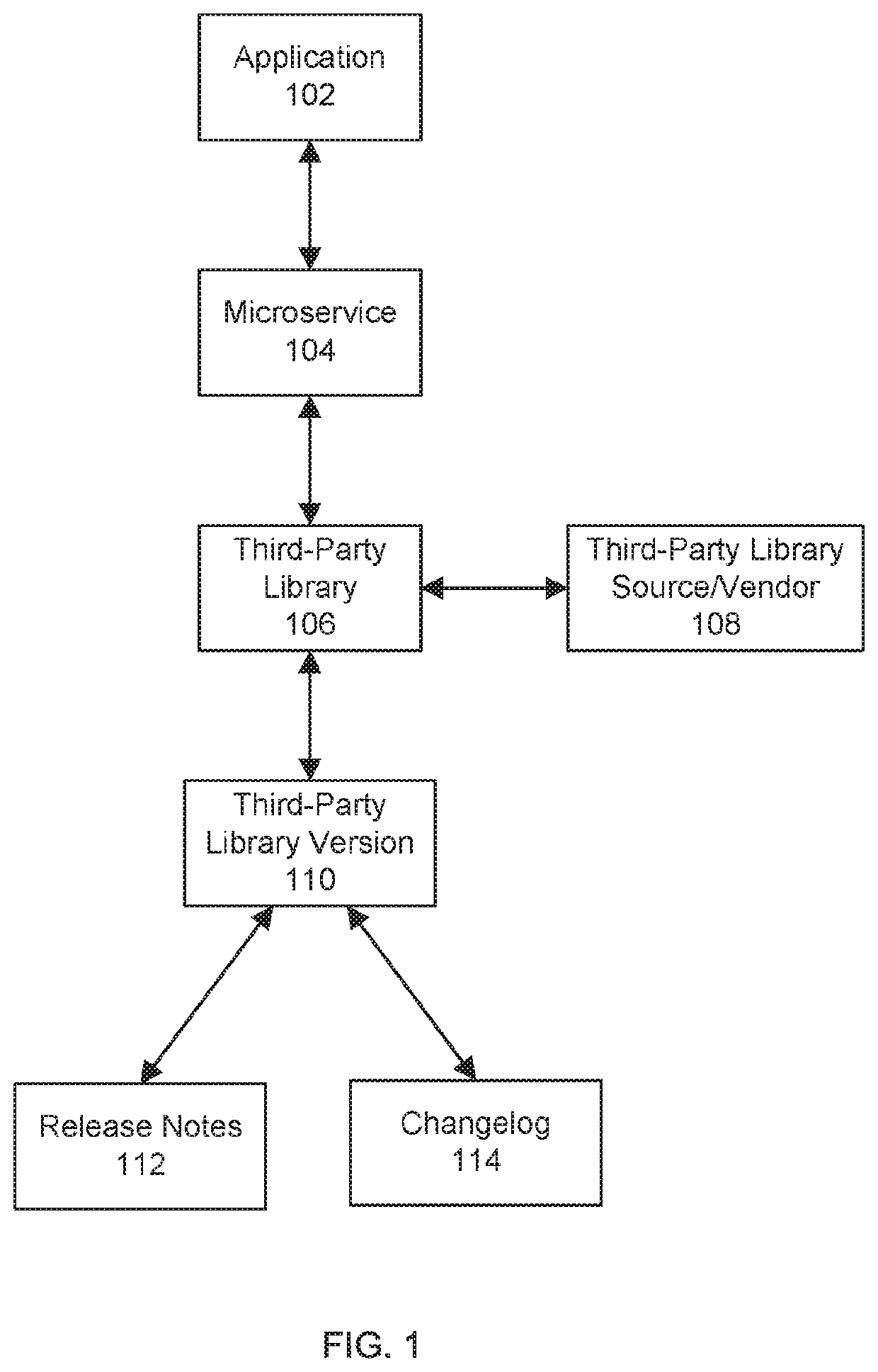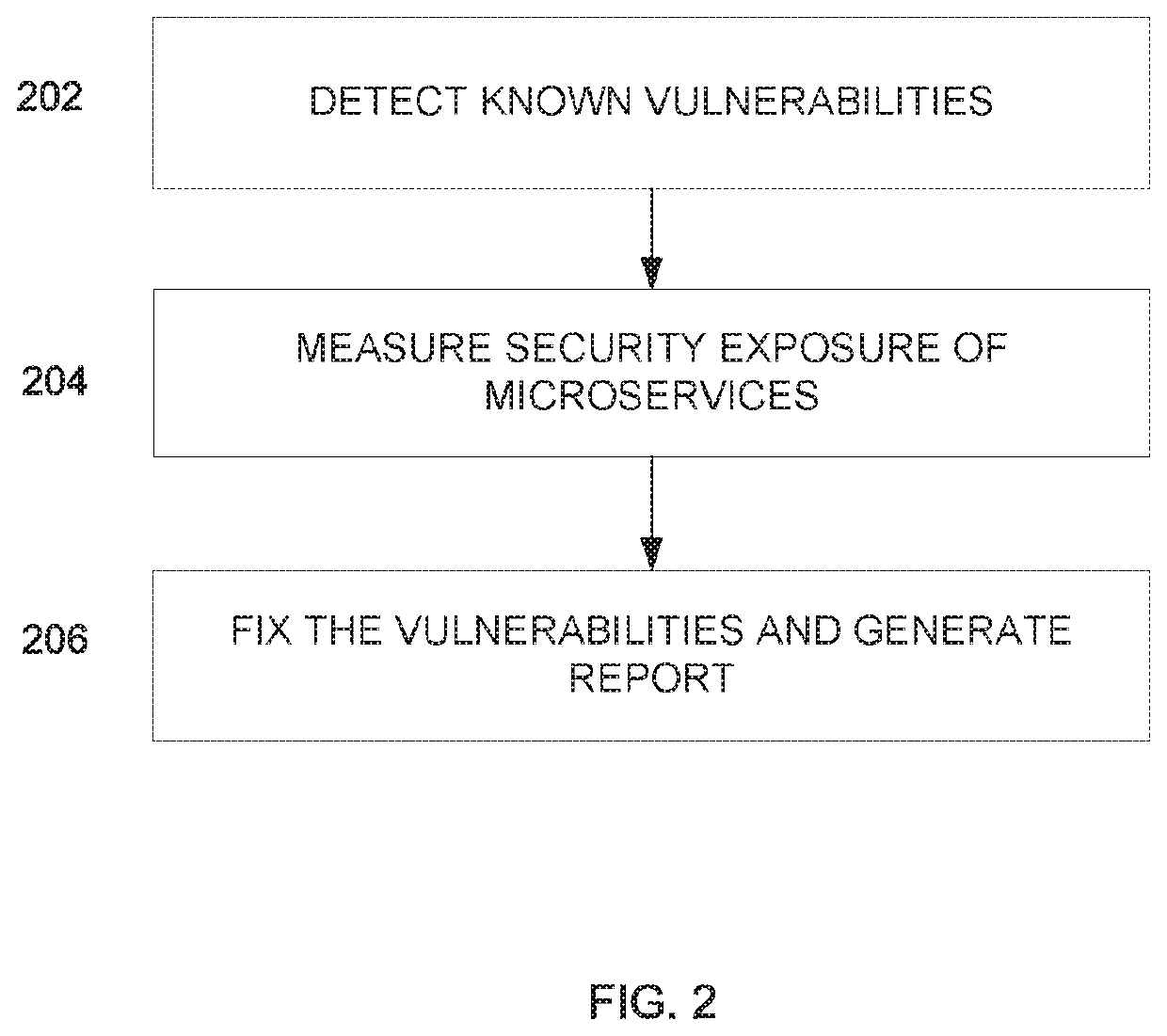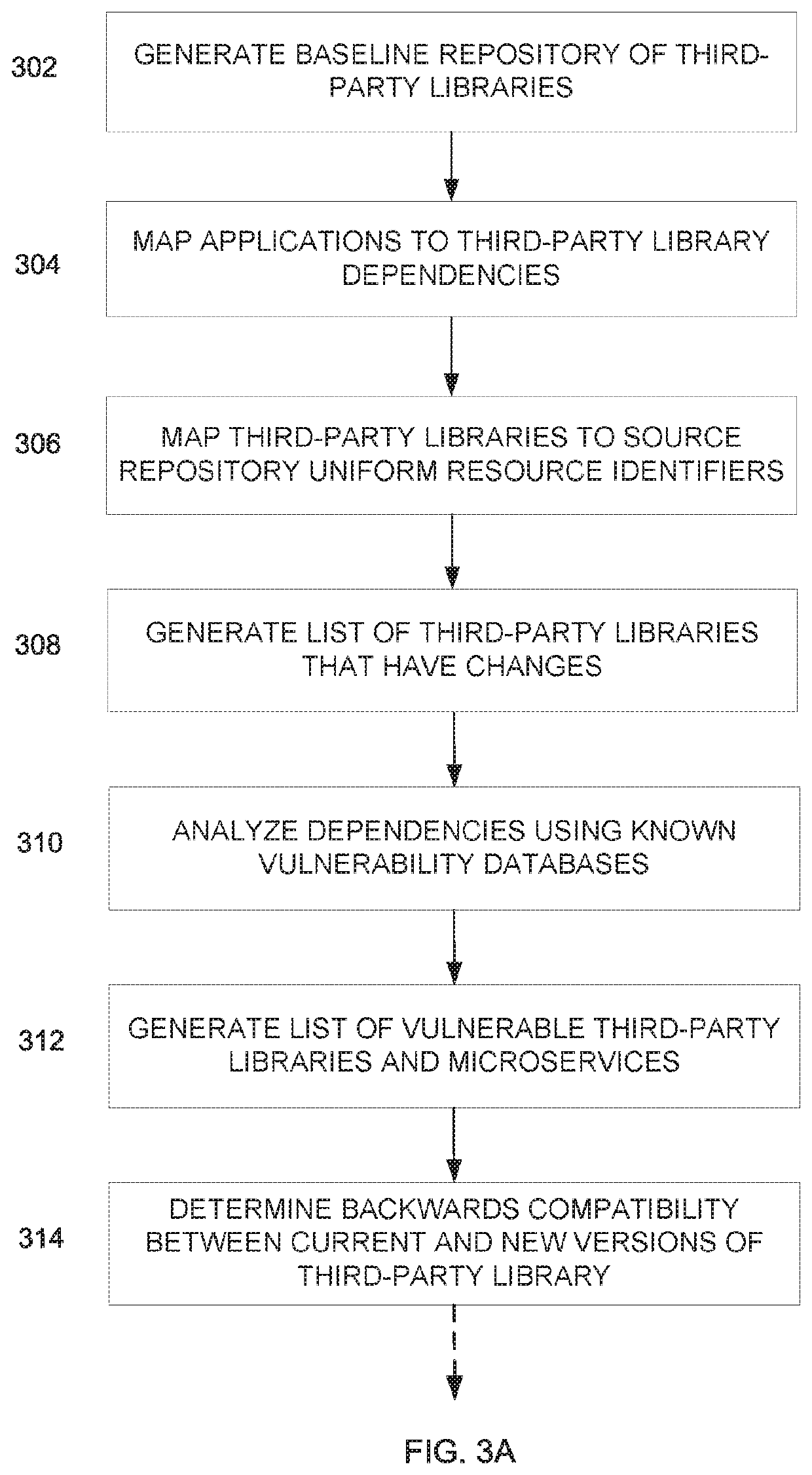Continuous vulnerability management for modern applications
a vulnerability management and application technology, applied in software maintainance/management, multi-programming arrangements, instruments, etc., can solve the problems of affecting the most dependent microservices, causing one or more widespread cves, and significantly large attack surface, so as to achieve more robust and accurate solutions
- Summary
- Abstract
- Description
- Claims
- Application Information
AI Technical Summary
Benefits of technology
Problems solved by technology
Method used
Image
Examples
Embodiment Construction
[0023]Various embodiments provide apparatuses, methods, and systems pertaining to the implementation of continuous and automatic vulnerability management for modern applications. Some embodiments address problems that may occur when updating libraries upon which microservices are dependent by providing a more robust and faster solution for determining and addressing common vulnerabilities and exposures (“CVEs”) within APIs used by a software package. As an example, this can be done by: (i) determining a list of libraries within an API that may be affected by a CVE, (ii) quantifying a number of APIs that may be affected by a CVE and how significantly each API has been affected, (iii) and providing a notification or a report that contains the quantified analysis of potential CVEs.
[0024]In further detail, a list of third-party libraries can be obtained and mapped to their dependencies within a microservice and subsequently their APIs. Open-source third-party libraries can then be mappe...
PUM
 Login to View More
Login to View More Abstract
Description
Claims
Application Information
 Login to View More
Login to View More - R&D
- Intellectual Property
- Life Sciences
- Materials
- Tech Scout
- Unparalleled Data Quality
- Higher Quality Content
- 60% Fewer Hallucinations
Browse by: Latest US Patents, China's latest patents, Technical Efficacy Thesaurus, Application Domain, Technology Topic, Popular Technical Reports.
© 2025 PatSnap. All rights reserved.Legal|Privacy policy|Modern Slavery Act Transparency Statement|Sitemap|About US| Contact US: help@patsnap.com



